Whitby was presenting its summer face to us and the relaxed tourists were swarming around the streets and alleys. Whitby clearly stood out from the previous east coast towns as a tourist holiday resort and at this early summer weekend there was a clear holiday feeling.

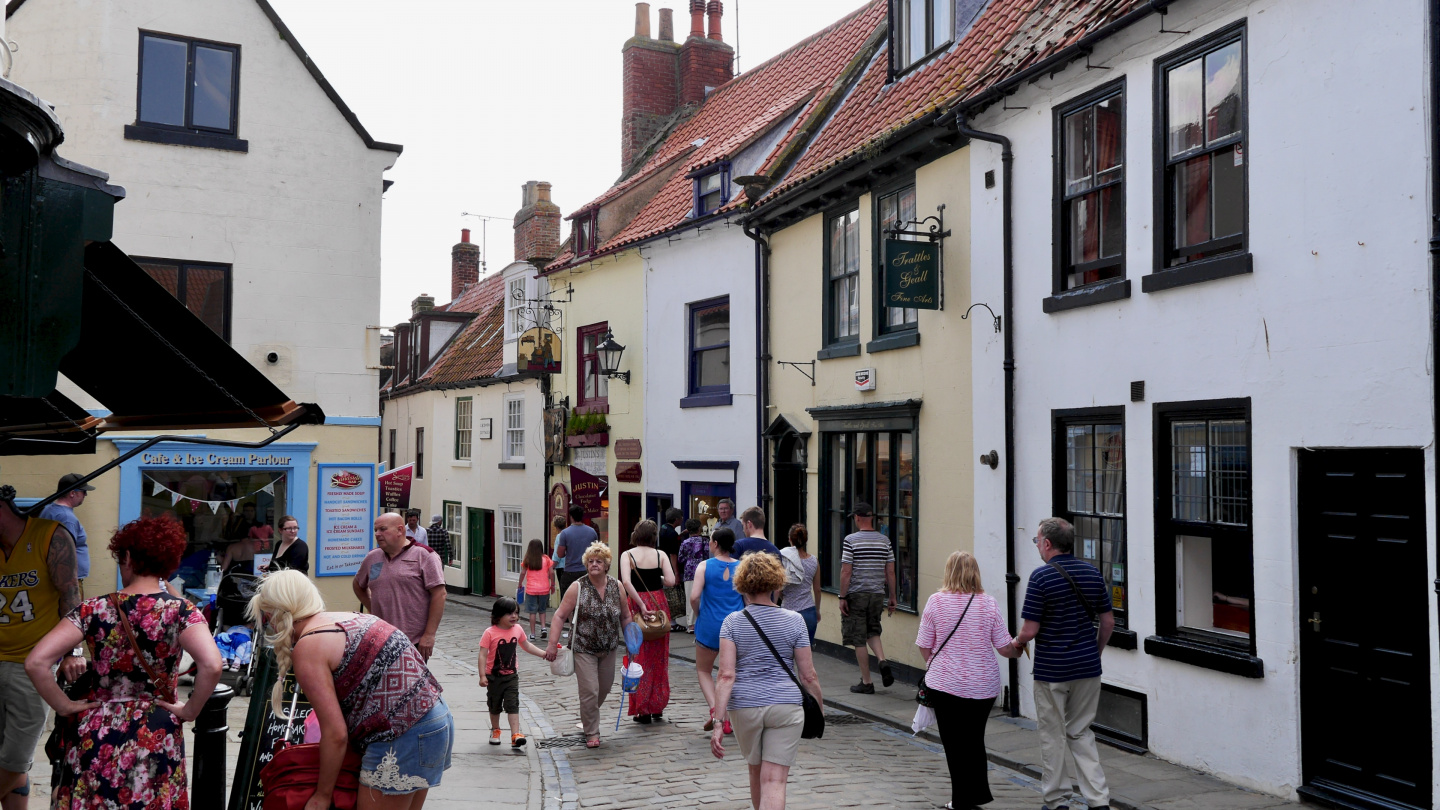

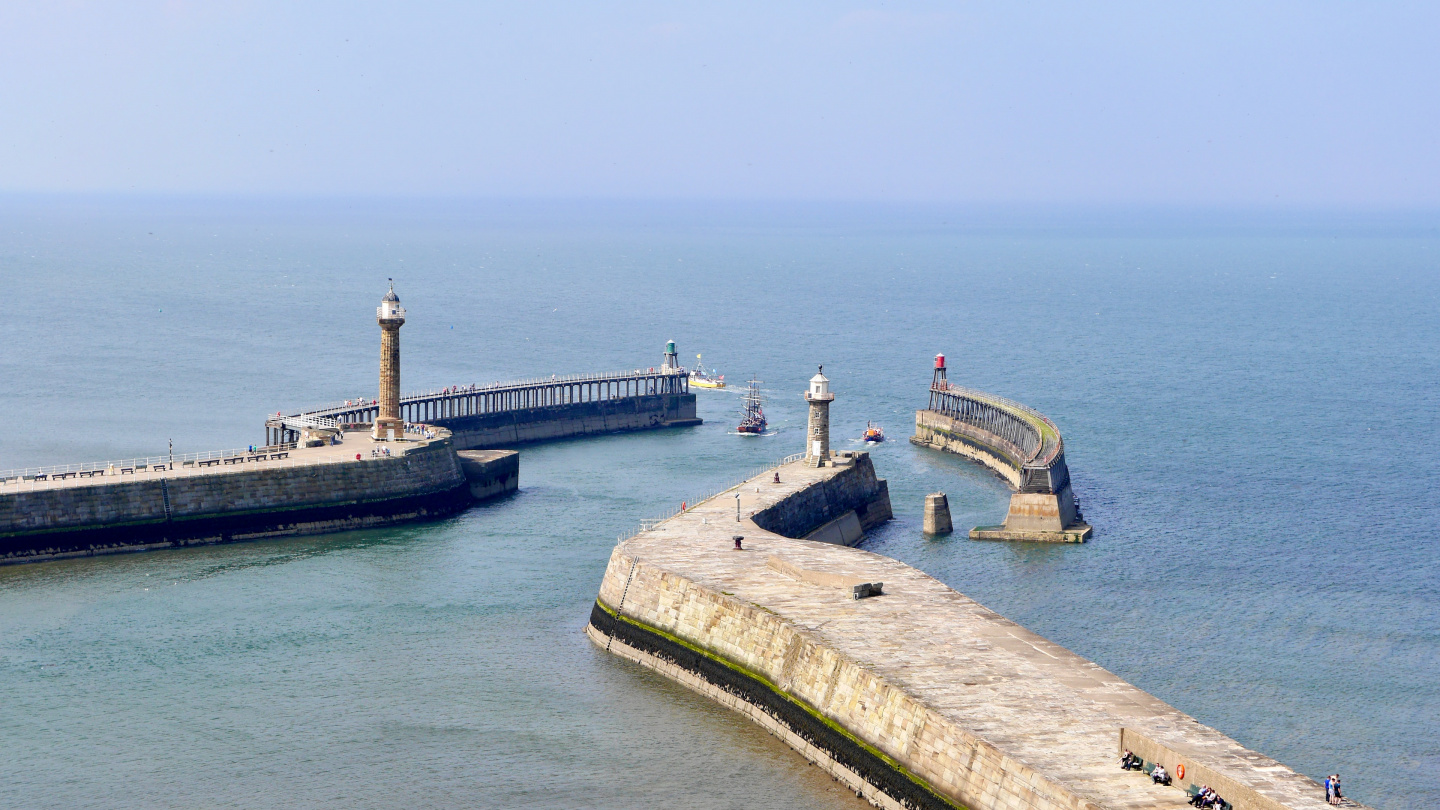
Whitby is located at the mouth of the river Esk. The cliffs that are on both the western and eastern shore of the river create a scenic ground for the old city buildings. Also the harbour is situated on the river with pontoons just behind the bridge.



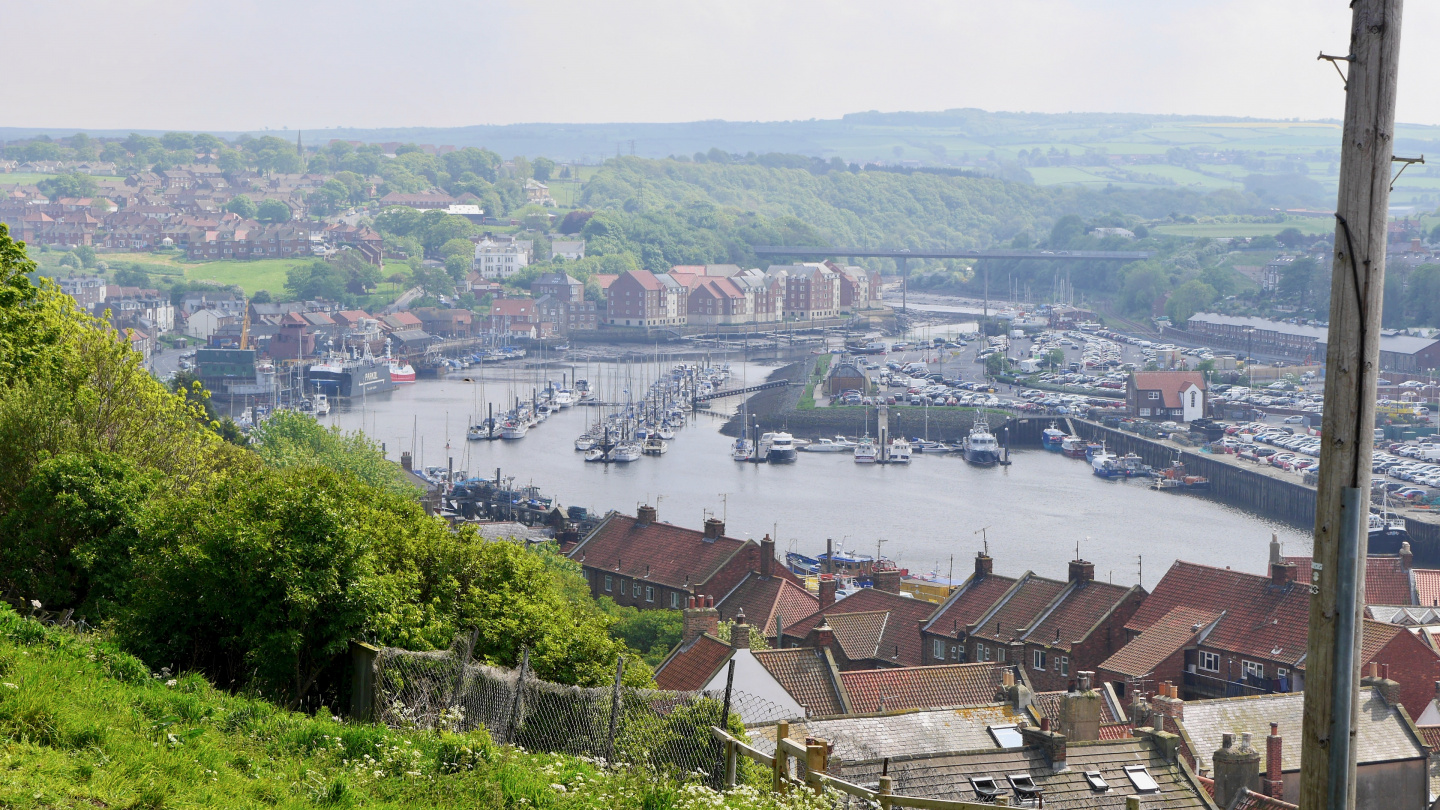
There are many holiday houses for rent along with the myriad of shops and restaurants in Whitby. However there are the ruins of the Whitby Abbey on the eastern cliff. Church Steps, a flight of 199 steps lead up the hill to the church from the streets below. The church graveyard is used as a setting in Bram Stoker’s novel, Dracula.
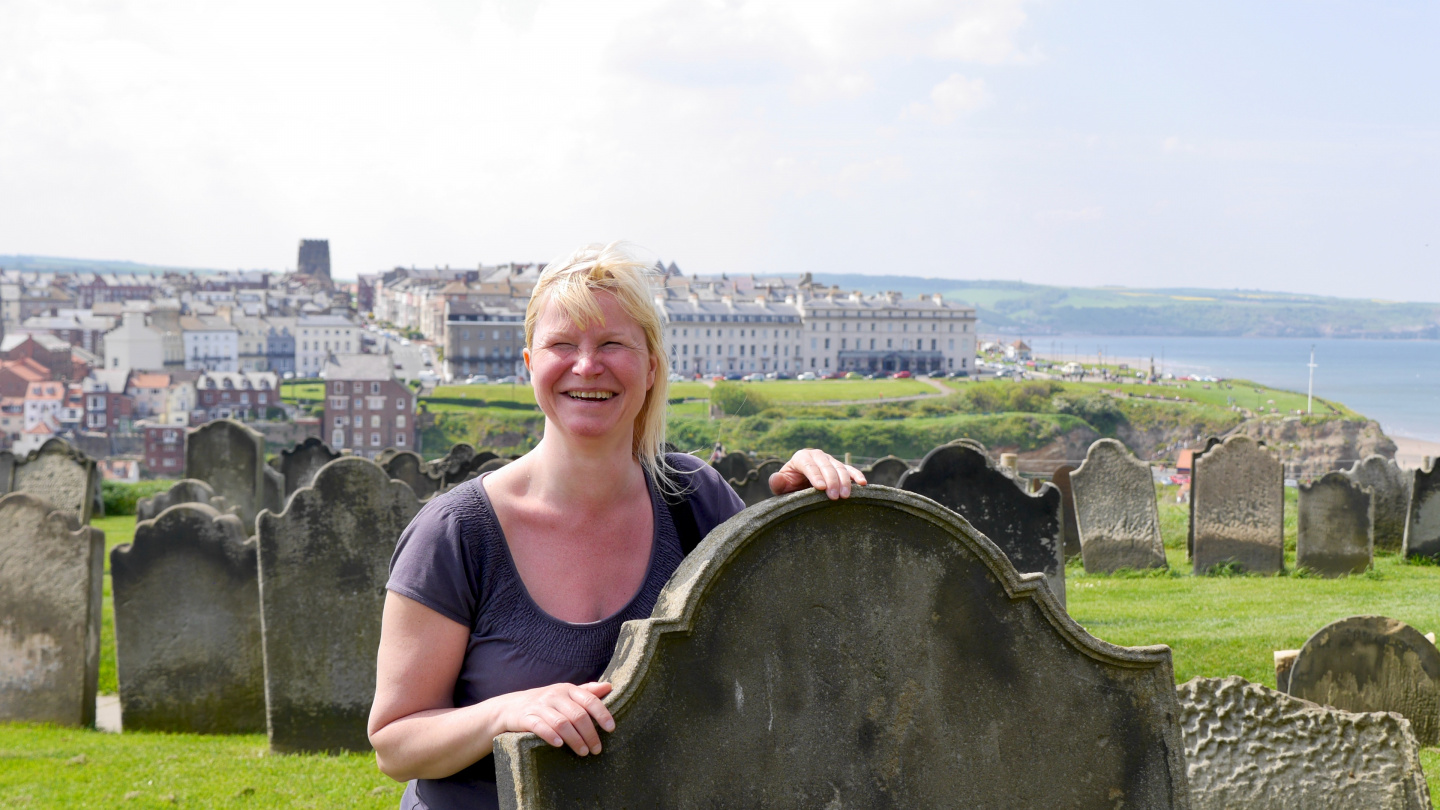
The most interesting sight was definitely for us the Captain Cook Memorial Museum. The Museum is in the 17th century house on Whitby’s harbour where the young James Cook lodged as apprentice. It was here Captain Cook trained as a seaman, leading to his epic voyages of discovery.
The both models of his ships were presented In the museum. HMS Endeavour, that he used on his first exploration voyage and HMS Resolution that was a lead ship on the second and the third expedition. On these three voyages in the 18th century he together with his crew charted many islands on the Pacific Ocean, New Zealand and the east coast of Australia. It is unbelievable how well they managed to navigate and find new continents and islands. Especially if you think about how vast is the Pacific, indeed! They systematically crossed it from north to south and back when searching a land.

The expeditions of Cook were so highly valued that he was one of the few who also received the passport of an enemy country France. At this time England and France were in war with each other. However the governments of both countries believed that the exploration voyages were so important to man kind that the passports were issued to enemy exploration captains as well. It must have been a significant help on provisioning the ship in distant waters that had already been colonized by the other country.
The museum presented the Cook’s voyages really well. There were documents about planning and commissioning of the ships and of course the sailing routes. What kind of a ship would you design for sailing into unknown? How arrange going ashore and how to arrange the provisioning for journeys lasting many years. Transporting fresh water was still difficult, sothe ship’s stores had 19 tons of beer, 642 gallons of wine and 397 gallons of brandy. For example the sailor’s daily ration included one gallon of beer.
Cook acquired from his voyages many samples for scientists like for example the stuffed animals and cultural artefacts. He also had an artist aboard who created paintings about distant countries. On a time before camera this was the way to bring back knowledge about the people, animals and plants
Fortunately the Cook’s museum is located in a real coastal town because for the first time in England there were many fish restaurants side-by-side and the catch of local fisherman was served freshly. Of course almost every second place advertised to be the awardee of the Best Fish and Chips Restaurant in England. No wonder why more than half of the patrons were tasting the national fish delicacy. We however feasted with halibut, king prawns and various other fish platters.
On Saturday evening while walking on small alleys of Whitby, we popped into the cosy pub, called Little Angel where the band was just playing the Beatles. The feeling was high and the band coniinued to play sixties and seventies covers. It was just a perfect place to enjoy a pint or two.
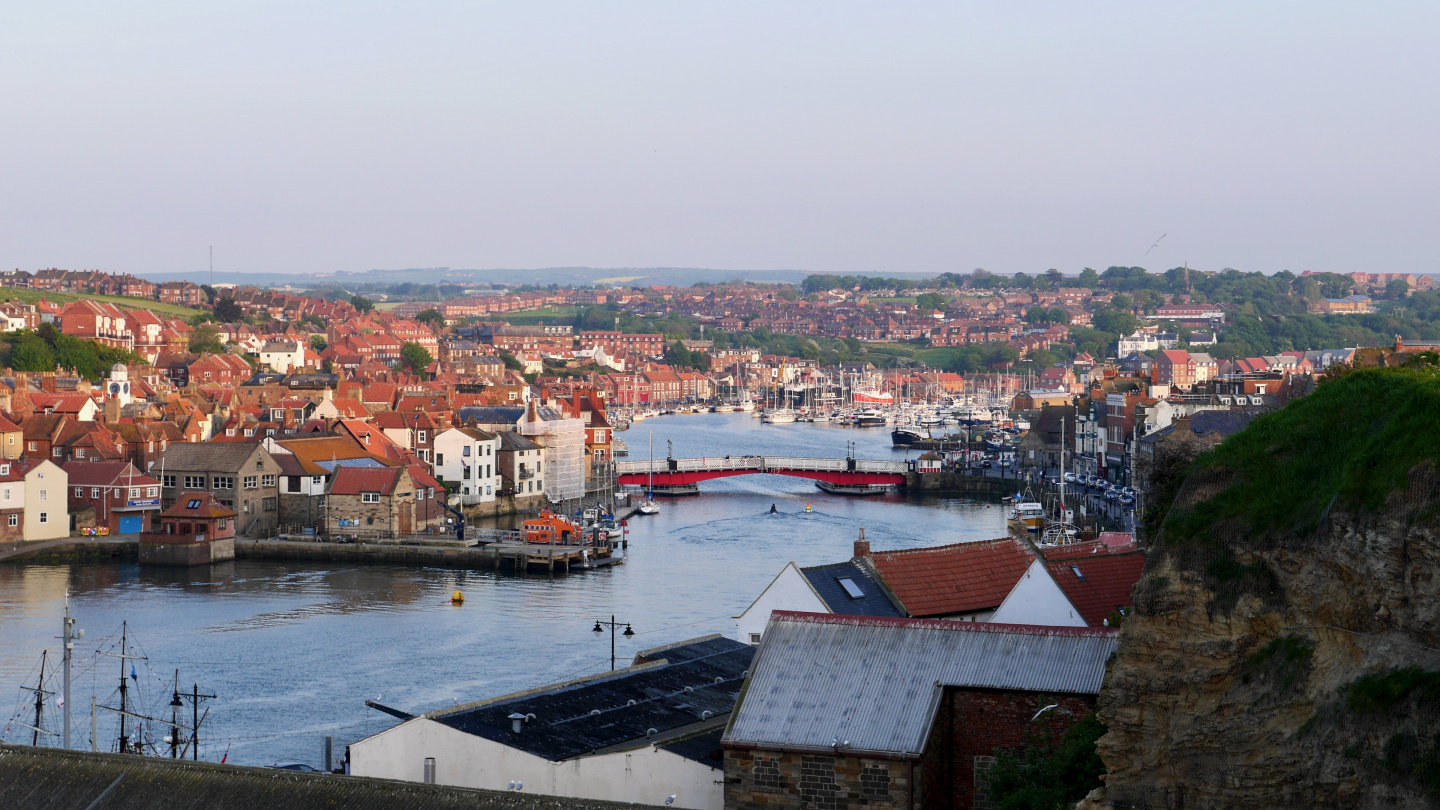
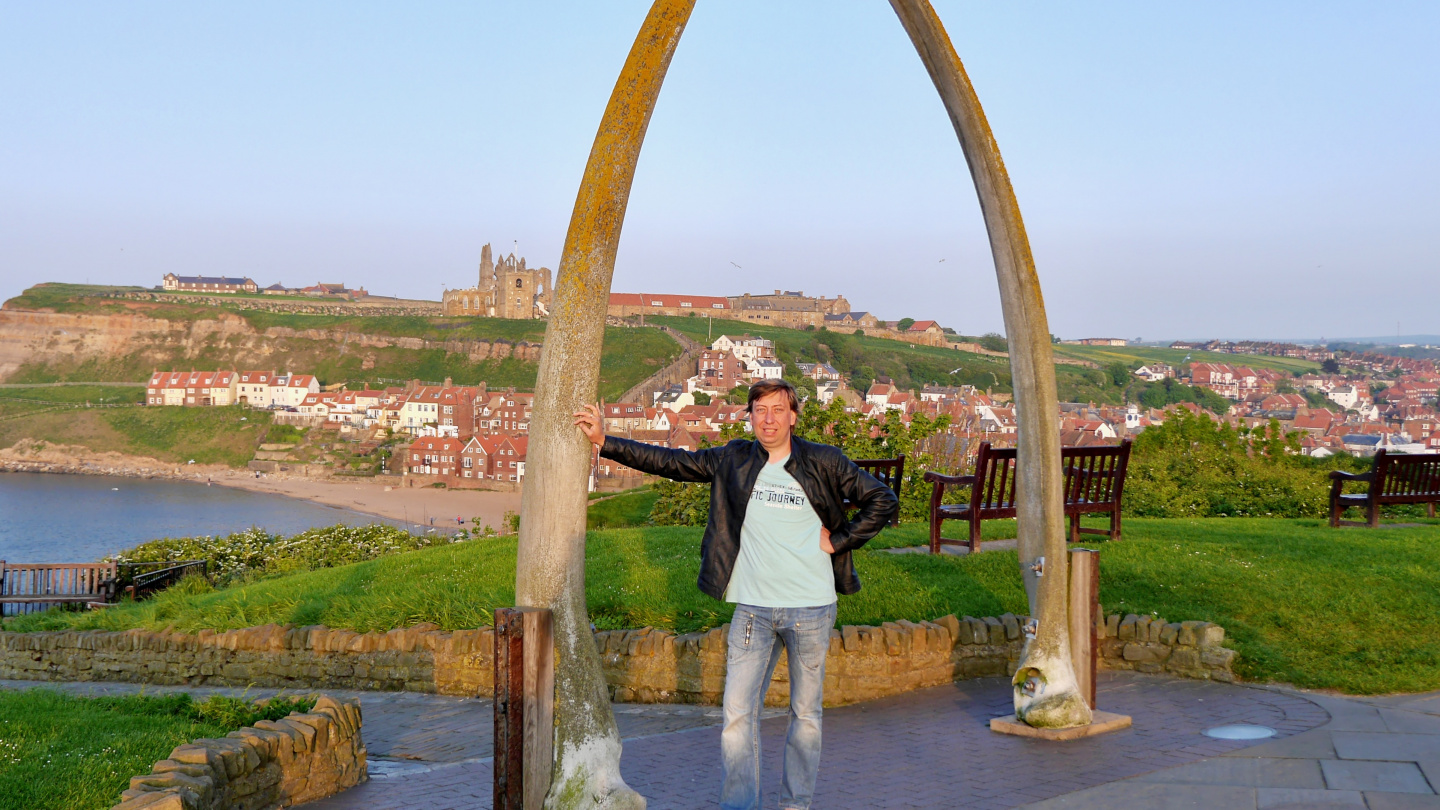
Whitby is about 400 km from London and two hundred kilometres from Manchester. No wonder all brits towhom we have been talking about our plan to visit in Whitby, have also had a vacation by themselves there. By coming with own boat we had an excellent weekend in Whitby.

